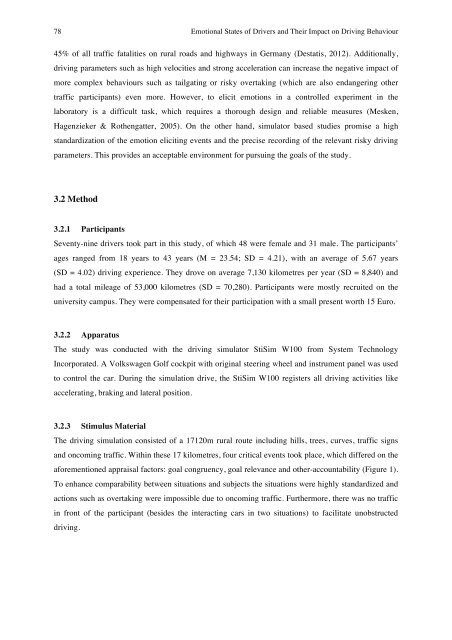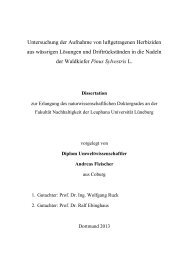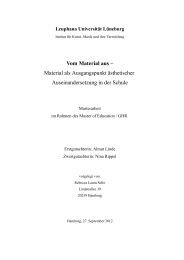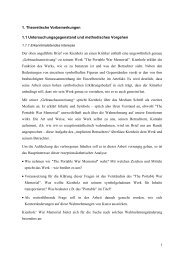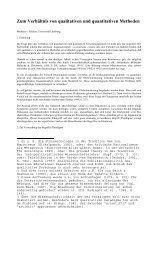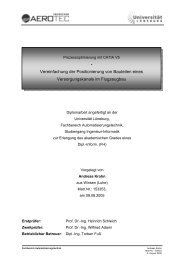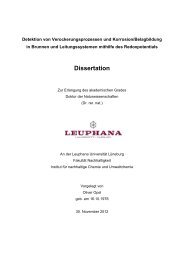Determinants of Emotional Experiences in Traffic Situations ... - OPUS
Determinants of Emotional Experiences in Traffic Situations ... - OPUS
Determinants of Emotional Experiences in Traffic Situations ... - OPUS
Create successful ePaper yourself
Turn your PDF publications into a flip-book with our unique Google optimized e-Paper software.
78 <strong>Emotional</strong> States <strong>of</strong> Drivers and Their Impact on Driv<strong>in</strong>g Behaviour!<br />
45% <strong>of</strong> all traffic fatalities on rural roads and highways <strong>in</strong> Germany (Destatis, 2012). Additionally,<br />
driv<strong>in</strong>g parameters such as high velocities and strong acceleration can <strong>in</strong>crease the negative impact <strong>of</strong><br />
more complex behaviours such as tailgat<strong>in</strong>g or risky overtak<strong>in</strong>g (which are also endanger<strong>in</strong>g other<br />
traffic participants) even more. However, to elicit emotions <strong>in</strong> a controlled experiment <strong>in</strong> the<br />
laboratory is a difficult task, which requires a thorough design and reliable measures (Mesken,<br />
Hagenzieker & Rothengatter, 2005). On the other hand, simulator based studies promise a high<br />
standardization <strong>of</strong> the emotion elicit<strong>in</strong>g events and the precise record<strong>in</strong>g <strong>of</strong> the relevant risky driv<strong>in</strong>g<br />
parameters. This provides an acceptable environment for pursu<strong>in</strong>g the goals <strong>of</strong> the study.<br />
3.2 Method<br />
!<br />
3.2.1 Participants<br />
Seventy-n<strong>in</strong>e drivers took part <strong>in</strong> this study, <strong>of</strong> which 48 were female and 31 male. The participants’<br />
ages ranged from 18 years to 43 years (M = 23.54; SD = 4.21), with an average <strong>of</strong> 5.67 years<br />
(SD = 4.02) driv<strong>in</strong>g experience. They drove on average 7,130 kilometres per year (SD = 8,840) and<br />
had a total mileage <strong>of</strong> 53,000 kilometres (SD = 70,280). Participants were mostly recruited on the<br />
university campus. They were compensated for their participation with a small present worth 15 Euro.<br />
3.2.2 Apparatus<br />
The study was conducted with the driv<strong>in</strong>g simulator StiSim W100 from System Technology<br />
Incorporated. A Volkswagen Golf cockpit with orig<strong>in</strong>al steer<strong>in</strong>g wheel and <strong>in</strong>strument panel was used<br />
to control the car. Dur<strong>in</strong>g the simulation drive, the StiSim W100 registers all driv<strong>in</strong>g activities like<br />
accelerat<strong>in</strong>g, brak<strong>in</strong>g and lateral position.<br />
3.2.3 Stimulus Material<br />
The driv<strong>in</strong>g simulation consisted <strong>of</strong> a 17120m rural route <strong>in</strong>clud<strong>in</strong>g hills, trees, curves, traffic signs<br />
and oncom<strong>in</strong>g traffic. With<strong>in</strong> these 17 kilometres, four critical events took place, which differed on the<br />
aforementioned appraisal factors: goal congruency, goal relevance and other-accountability (Figure 1).<br />
To enhance comparability between situations and subjects the situations were highly standardized and<br />
actions such as overtak<strong>in</strong>g were impossible due to oncom<strong>in</strong>g traffic. Furthermore, there was no traffic<br />
<strong>in</strong> front <strong>of</strong> the participant (besides the <strong>in</strong>teract<strong>in</strong>g cars <strong>in</strong> two situations) to facilitate unobstructed<br />
driv<strong>in</strong>g.


